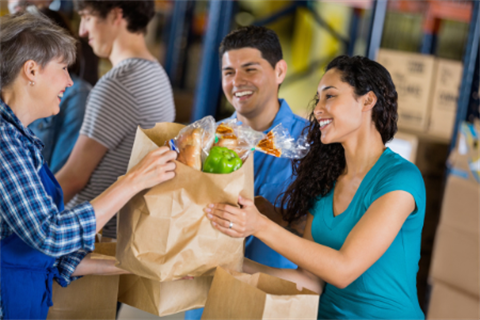Edible Food Recovery

Food Waste
Californians send 2.5 billion meals worth of still-fresh, unsold food to landfills each year as 1 in 5 Californians does not have enough to eat. These households often must choose between eating and basic needs like housing or medical bills.
To reduce food waste and address food insecurity, surplus food that is still safe for people to eat will be donated to food banks, soup kitchens, and other food recovery organizations and services to help feed Californians in need. This will cut waste sent to landfills and lower methane climate pollution from organic waste rotting in landfills.
What does edible food mean?
- "Edible food" means food intended for human consumption. It is not solid waste if it is recovered and not discarded.
Senate Bill 1383 and Food Recovery
To reduce food waste and help address food insecurity, SB 1383 requires that by 2025 California will recover 20 percent of edible food that would otherwise be sent to landfills, to feed people in need. The law directs the following:
- Jurisdictions must establish food recovery programs and strengthen their existing food recovery networks
- Food donors must arrange to recover the maximum amount of their edible food that would otherwise go to landfills
- Food recovery organizations and services that participate in SB 1383 must maintain records
Athens Services
Athens Services has partnered with the City of South Pasadena to implement food scrap collection within the City. Landfills are the third largest source of methane in California. Organics waste emits 20% of the state’s methane. By diverting organics from the landfill, you can part of the solution in helping protect the environment and future generations.
Edible Food Recovery/Donation Requirements
Who must comply?
Under SB 1383, certain businesses are required to arrange for edible food recovery. These businesses are categorized into Tier 1 and Tier 2 generators. Tier 1 includes larger food retailers and distributors, while Tier 2 includes prepared food service businesses and institutions.
Both tiers must:
- Establish contracts/agreements with food recovery organizations or services
- Track the amount of food recovered (documentation is required).
- Avoid intentionally spoiling food to avoid donation.

How to comply?
Mandated food donors can help their communities now by starting to work with local food banks, food pantries and other food recovery services. Through the San Gabriel Valley Council of Governments, businesses in each tier have access to technical assistance services for help in setting up a program.
Steps to Compliance:
- Establish contracts or written agreements with food recovery organizations for edible food donation.
- Maintain records of all food donation activities by using apps such Careit to help.
- Donate all edible food that would otherwise be disposed. Preventing food loss before it happens is the safest, easiest and the most cost-effective method to minimize waste.
List of Food Recovery Organizations & Services
Holy Family Giving Bank
Contact
The Giving Bank
St. Joseph Center
1524 Fremont Ave.
South Pasadena, CA 91030
Marlene Moore, Director
(626) 403-6141
Website: holyfamily.org/giving-bank